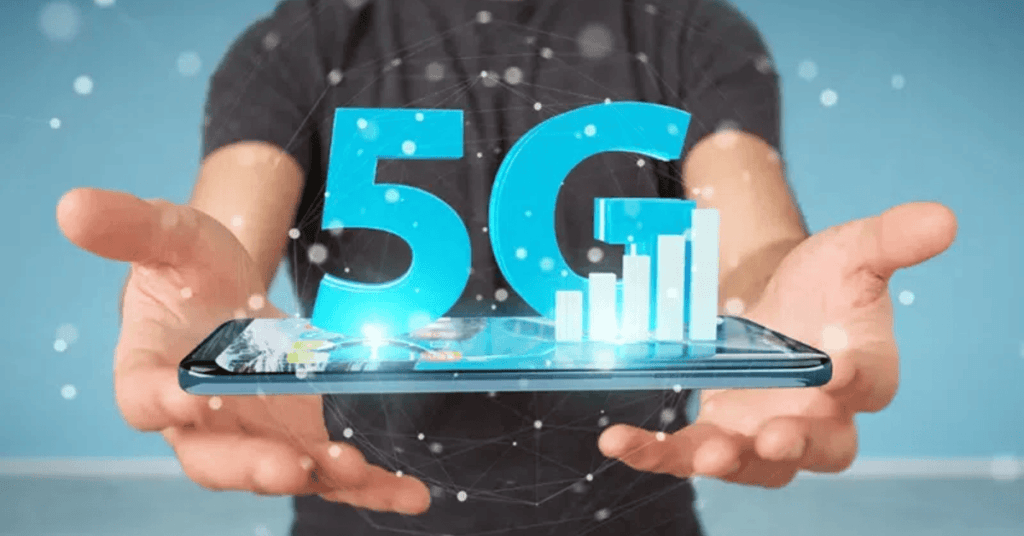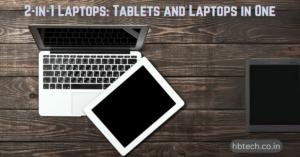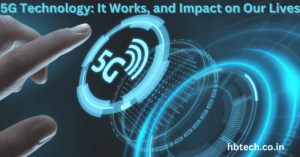
5G technology has been one of the most talked-about advancements in recent years. As the latest generation of mobile network technology, 5G is set to change the way we connect to the internet and interact with each other through devices. This technology is not just about faster internet on our phones, it’s set to transform many areas of life from healthcare to transportation.
5G Technology
5G stands for the fifth generation of mobile networks, an upgrade from 4G. It offers three major improvements over previous generations:
- Faster Speeds: 5G is up to 100 times faster than 4G. This means downloading a high-definition movie or a large game can take seconds instead of minutes
- Lower Latency: Latency is the time it takes for data to travel between devices. 5G reduces this delay to nearly zero, which is crucial for things like virtual reality and remote-controlled devices that need instant responses.
- More Connections: 5G can support a large number of devices connected simultaneously. This capability makes it ideal for the “Internet of Things” (IoT) where everything from our cars to our refrigerators can be connected to the internet and communicate with each other.
How Does 5G Work?
5G works by using higher-frequency waves than 4G, which allows it to carry data faster and more efficiently. However, these waves don’t travel as far as 4G signals, so 5G needs more cell towers, or small cells, closer together, especially in cities where many people use data-heavy apps.
- High-Frequency Waves: 5G uses millimeter waves, which are shorter than the frequencies used by 4G. These higher frequencies can carry more data but have a shorter range, requiring more towers for strong coverage.
- Small Cells and MIMO: To make up for the short range, 5G relies on “small cells” – small towers that work together with larger cell towers. 5G also uses a technology called Massive MIMO (Multiple Input Multiple Output), which uses multiple antennas to handle more connections at once making it more efficient.
- Beamforming: This technology directs data to specific devices rather than broadcasting it everywhere. This helps 5G signals reach devices more effectively and reduces interference, especially in crowded areas.
Benefits of 5G Technology
5G technology brings a variety of benefits that will improve our digital experiences and support the development of new technologies:
- Enhanced Mobile Experience: With 5G you’ll be able to stream videos, play online games and use mobile apps faster and more smoothly, even in busy locations.
- Supporting the Internet of Things (IoT): 5G will connect all kinds of devices, from smart home gadgets to wearable health monitors. This “Internet of Things” will make daily tasks easier and more efficient, as devices can share data instantly.
- Better Healthcare: 5G can help with telemedicine, remote patient monitoring, and even robotic surgeries. Doctors can perform remote consultations or monitor patients’ conditions in real time, making healthcare more accessible and timely.
- Enabling Self-Driving Cars: Self-driving cars need constant data to make quick decisions. With 5G’s low delay, cars can communicate instantly with traffic lights and road sensors, improving safety and efficiency.
- Virtual and Augmented Reality: 5G’s speed and low latency will make virtual reality and augmented reality experiences smoother and more realistic. This will enhance gaming, virtual meetings, and training simulations.
- Building Smart Cities: 5G can connect traffic systems, pollution sensors, and waste management in cities, making them more efficient and responsive. This means smoother traffic, cleaner environments, and faster emergency responses.
Real-World Applications of 5G
Several industries are already starting to use 5G technology, with exciting real-world examples of its benefits:
- Healthcare in South Korea: 5G is being used for remote surgeries, where doctors can operate on patients from miles away using robotic arms, thanks to the nearly instant response times of 5G.
- Farming in Japan: Japanese farmers are using 5G-enabled drones and sensors to monitor crops and manage resources. This helps reduce water usage and improve crop quality
- Manufacturing in Germany: Factories in Germany are using 5G to create “smart factories,” where machines communicate with each other to streamline production. These factories use data to anticipate maintenance needs reducing downtime.
- Retail in the U.S.: Stores are experimenting with 5G to improve customer experiences offering things like virtual try-ons, instant product details and contactless payments, making shopping easier and faster.
Challenges and Limitations of 5G
While 5G is promising, there are some challenges to consider:
- High Infrastructure Costs: Setting up the dense network of small cells needed for 5G coverage is costly, which means it may take longer to reach rural areas.
- Limited Range of High-Frequency Waves: 5G’s high-frequency waves don’t travel far and can be blocked by objects like buildings or trees. This is why coverage may be stronger in cities than in rural areas.
- Device Compatibility: Many people will need to upgrade to 5G-compatible devices to take full advantage of the technology, which may not be convenient or affordable for everyone.
- Privacy and Security: 5G connects more devices, which creates new security challenges. With so many connected devices, it’s important to ensure data privacy and protect against hacking.
5G technology is set to revolutionize the way we connect and interact with the digital world. With its incredible speed, low delay, and ability to support millions of devices, 5G will enhance our daily lives and pave the way for new technologies like smart cities, self-driving cars and advanced healthcare. Although there are some challenges to overcome, the benefits and possibilities make 5G one of the most exciting advancements in modern technology.
Frequently Asked Questions(FAQs)
What is 5G technology?
5G is the fifth generation of mobile network technology, offering faster speeds, lower latency, and the ability to connect more devices at once compared to previous networks. It is designed to improve the performance of mobile networks, making things like streaming, gaming, and communication smoother and more efficient.
How is 5G different from 4G?
5G is much faster than 4G, offering download speeds up to 100 times faster. It also reduces latency, meaning there is less delay in transmitting data, which is crucial for real-time applications like virtual reality and remote-controlled devices. Additionally, 5G can handle more connected devices simultaneously, making it ideal for the Internet of Things (IoT).
What are the main benefits of 5G?
The key benefits of 5G include:
Faster internet speeds for quicker downloads, streaming, and gaming.
Lower latency for real-time communication and applications like remote surgery or autonomous driving.
Increased connectivity to support millions of devices simultaneously, improving IoT and creating smarter cities.
Improved healthcare with better telemedicine and remote patient monitoring.
Enhanced virtual and augmented reality experiences.How does 5G work?
5G works by using higher frequency millimeter waves, which can carry more data but have a shorter range. It relies on small cells (miniature base stations) to provide better coverage, especially in dense areas. Technologies like Massive MIMO (Multiple Input, Multiple Output) and beamforming are used to increase network capacity and efficiency, directing data to specific devices to avoid interference.
What are the challenges of 5G deployment?
The main challenges include the need for more infrastructure, such as additional cell towers and antennas, since 5G operates on higher-frequency bands that don’t travel as far. There’s also the need for governments to allocate more frequency bands for 5G use.
Why is 5G important for the future?
5G is crucial for the future because it will enable new technologies, transform industries and make everyday life more connected and efficient. It will help create smarter cities, improve healthcare, enhance entertainment, and support the growing demand for interconnected devices.
Related Posts
- 2-in-1 Laptops: Tablets and Laptops in One
- 5G Technology: What It Is, It Works and Impact on Our Lives
- 8K Gaming on a Laptop: Is It Worth It?
- A Simple Guide to Remote Work: Work from Anywhere, Anytime
- A Visit to the Museum of Jurassic Technology
- Affordable AI Solutions for Small Businesses









